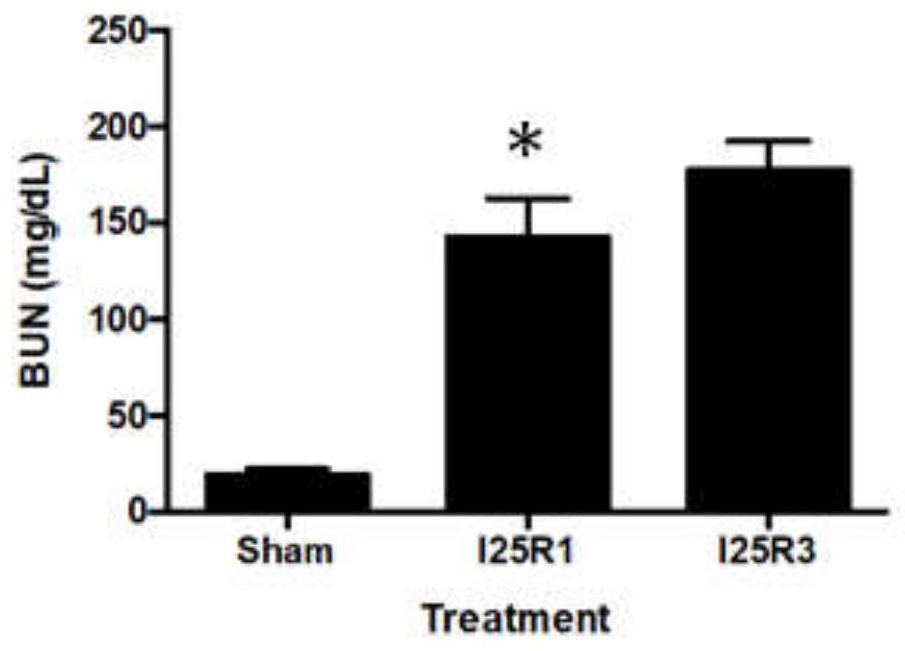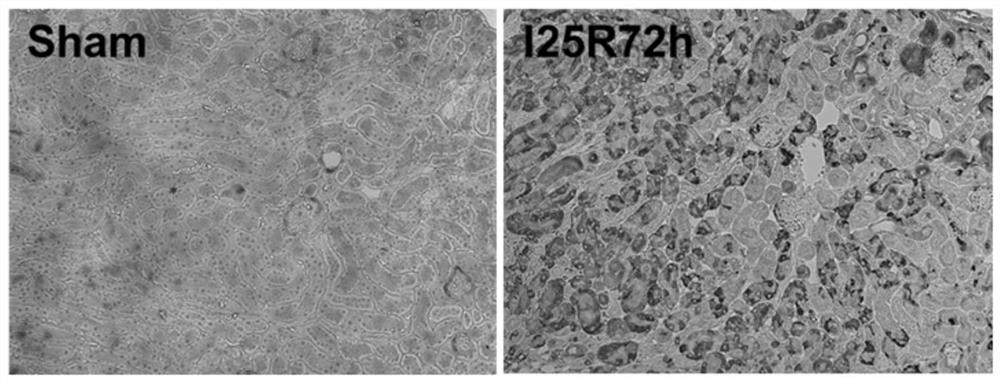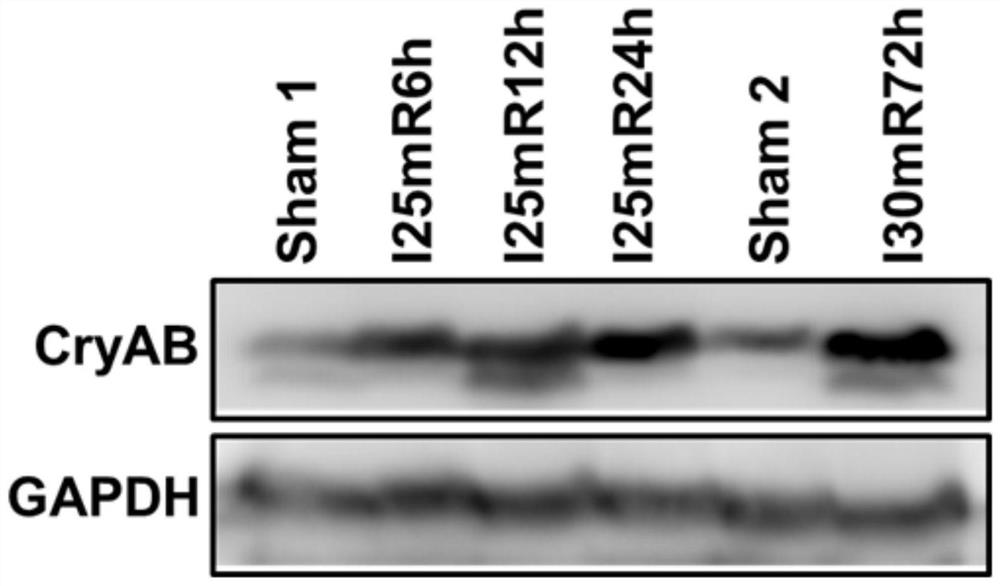Application of CRYAB in acute kidney injury detection and detection kit
A technology of acute kidney injury and kit, applied in the field of medicine, which can solve the problems of grading kidney injury and inability to detect AKI early
- Summary
- Abstract
- Description
- Claims
- Application Information
AI Technical Summary
Problems solved by technology
Method used
Image
Examples
Embodiment 1
[0022] Example 1. To demonstrate αB-crystallin as a sensitive and early biomarker of AKI, we used a mouse model of renal ischemia / reperfusion (I / R). 8-12 week old male C57BL / 6 mice were used throughout the study. The mice were anesthetized by intraperitoneal injection of 50-60 mg / kg pentobarbital and subcutaneous injection of 50 ug / kg buprenorphine, and placed on a constant temperature monitoring surgical blanket to balance their body temperature to 36.5-37°C. A 1-1.5 cm longitudinal surgical incision was made on the left side of the mouse from the abdomen to the 1 / 3 of the spine (near the spine); a 1-1.5 cm transverse incision was made on the right side along the ribs at the same position. Enter the abdominal cavity layer by layer, squeeze out the kidneys with cotton swabs, and bluntly separate the tissues around the renal pedicles. After exposing the renal blood vessels, put the kidneys back into the abdominal cavity. After 25 minutes, the color of the kidney changed from b...
Embodiment 2
[0024] Example 2. In all groups, renal function was assessed by measuring serum urea nitrogen, creatinine. For the detection of serum urea nitrogen, mix the mouse serum sample (standard control and blank deionized water control at the same time) with BUN color Reagent and BUN Acid Reagent, heat at 95°C for 10 minutes, place in ice water for 3-5 minutes, and mix thoroughly. After uniformity, detect the absorbance value at 520nm, draw a standard curve, and calculate the serum urea nitrogen value of each sample.
[0025] For serum creatinine detection, configure standard products 0, 66.3, 132.6, 198.9, 265.2 μM. Prepare 200ul working solution 0.96% sodium hydroxide: 0.83% picric acid=1:1, bathe in 37℃ water for 3 minutes, add 20μL standard or sample, time 20 seconds to read the absorbance value at 510nm, and then time 60 seconds to read the second time Absorbance value, draw a standard curve, and calculate the serum creatinine of the sample.
[0026] To investigate whether CryA...
Embodiment 3
[0027] Example 3. Cell protein extraction: collect cells (35mm culture dish as an example), collect the culture medium and centrifuge at 1000g for 5 minutes, discard the supernatant, wash the cells with 1×PBS and collect them in the same centrifuge tube and centrifuge at 1000g for 5 minutes, discard the supernatant . Add 100 μl protein lysate to fully cover all adherent cells, scrape the cells and lysate to one side with a clean scraper and transfer to the above centrifuge tube, lyse for a while, centrifuge at 15000g for 5 minutes to collect the supernatant for later use.
[0028]Determination of protein concentration and western blot analysis: the sample was diluted 10 times, and the standard was prepared according to the above method. Mix and prepare the working solution according to the ratio of A solution and B solution 50:1, add 200 μL of the working solution to each well of the 96-well plate, and add 10 μL each of the standard product and the diluted sample, repeat 2 pai...
PUM
 Login to View More
Login to View More Abstract
Description
Claims
Application Information
 Login to View More
Login to View More - R&D
- Intellectual Property
- Life Sciences
- Materials
- Tech Scout
- Unparalleled Data Quality
- Higher Quality Content
- 60% Fewer Hallucinations
Browse by: Latest US Patents, China's latest patents, Technical Efficacy Thesaurus, Application Domain, Technology Topic, Popular Technical Reports.
© 2025 PatSnap. All rights reserved.Legal|Privacy policy|Modern Slavery Act Transparency Statement|Sitemap|About US| Contact US: help@patsnap.com



